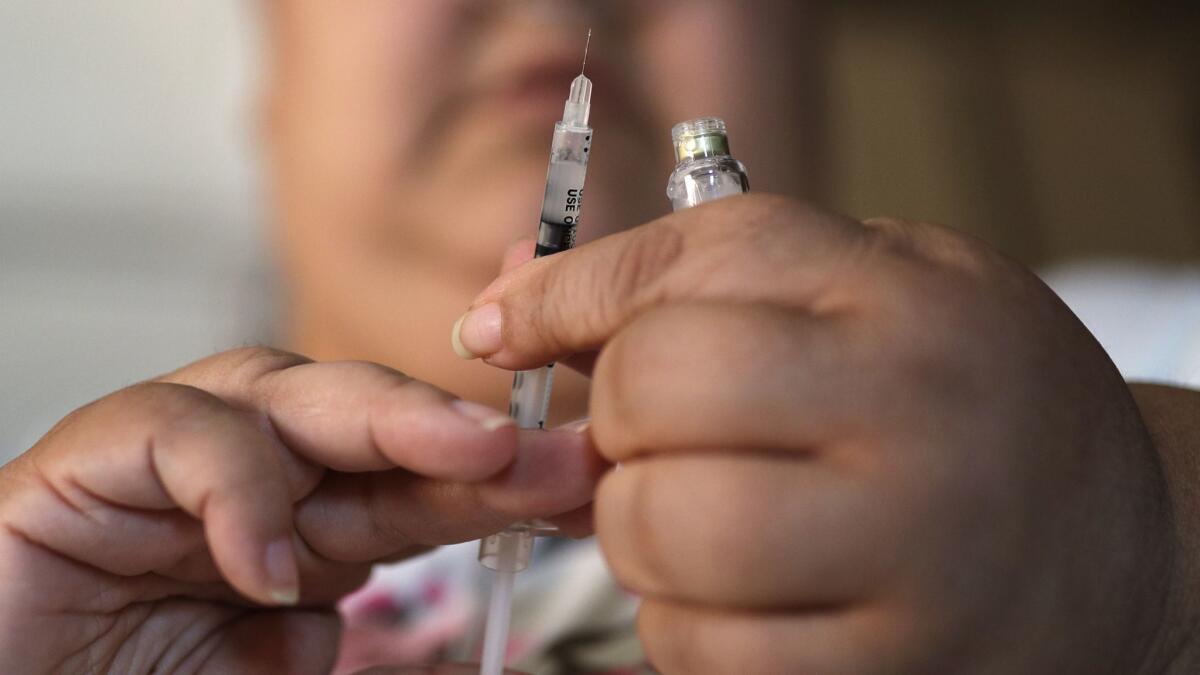Fewer Americans are diagnosed with diabetes, even though obesity keeps rising

The number of new diabetes cases among U.S. adults keeps falling even as obesity rates climb, and health officials aren’t sure why.
New federal data released Tuesday found the number of new diabetes diagnoses fell to about 1.3 million in 2017, down from 1.7 million in 2009.
Earlier research had spotted a decline, and the new report shows it’s been going on for close to a decade. That sounds like good news, but health officials are not celebrating.
“The bottom line is, we don’t know for sure what’s driving these trends,” said Stephen Benoit, a medical epidemiologist at the Centers for Disease Control and Prevention and lead author of the new report.
Among the possible reasons, Benoit said: changes in the way patients are tested for diabetes and success in getting at-risk people to improve their health before they become diabetic.
The new figures were published by the journal BMJ Open Diabetes Research & Care.
READ MORE: Half of Americans have diabetes or a high risk for it — and many of them are unaware »
Diabetes is a disease in which sugar builds up to dangerous levels in the blood. Type 2 diabetes, the most common form, is tied to obesity, and the number of diabetics ballooned as U.S. obesity rates increased.
But other factors also might have pushed up annual diabetes diagnoses from 2000 to 2010, and they may partly explain why the numbers have been going down since, some experts said.
First, the diagnostic threshold was lowered in the late 1990s. That caused more people to be counted as diabetic, but the effects of that change may have played out.
“We might have mined out a lot of the previously unrecognized cases,” said John Buse, a diabetes expert at the University of North Carolina, who was not involved in the new study.
Meanwhile, doctors have increasingly used a newer blood test to diagnose diabetes. It’s much easier than tests that required patients to fast for 12 hours or to undergo repeated blood draws over two hours.
The American Diabetes Assn. recommended the new test, known as the hemoglobin A1C blood test, for routine screening in 2010. Since it’s easier to do, it would be expected to lead to more diagnoses. But some experts say it could be missing early cases in which people aren’t showing symptoms.
“You may be missing people that would have been diagnosed” with older tests, Benoit said.
Another possibility: Increasingly, more doctors have been diagnosing “prediabetes,” a health condition in which blood sugar levels are high but not high enough to hit the diabetes threshold. Physicians typically push such patients into exercise programs and urge them to change their diet.
“Prediabetes is becoming a more accepted diagnosis,” said Tannaz Moin, an endocrinologist at UCLA, who was not involved in the new study. Patients who are told they have prediabetes may be improving their health before they become diabetic, she said.
The new report was based on a large national survey conducted by the government every year. Participants were asked if they had been diagnosed with diabetes, and if the diagnosis was made in the previous year.
Benoit and his coauthors found that the rate of new diabetes cases fell from 9.2 per 1,000 adults in 2009 to 6 per 1,000 in 2017. That 35% drop marks the longest decline since the government started tracking the statistic nearly 40 years ago, according to the CDC.
The decrease was mainly seen among white adults, the researchers said.
Meanwhile, the overall estimate of how many Americans have diabetes — whether the diagnosis is recent or not — has been holding steady at 80 per 1,000 U.S. adults. That translates to about 21 million Americans.
Stobbe is a medical writer for the Associated Press.






